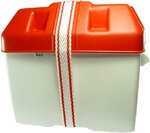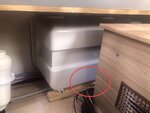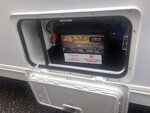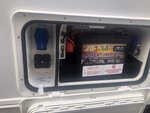Adding to the controller debate:
Whilst it may be stating the obvious to some, with our use of solar systems the real challenge is quite different to typical solar applications.
Our challenge is not getting the highest yield from the system but more the highest yield under challenging light conditions.
I suggest most of us can get all our batteries can hold on bright summer days? We have an 85Watt freestanding panel and during the summer on a good day fully recharge our battery back up by 10:00 to 10;30 hrs.
Where we struggle is getting the most, or even enough out of overcast or low sun angle days. The more so for others with panels installed flat on roof and so not "aimed".
It is in this specific area we really need to focus, and look to exploit what controllers and panels can offer.
Here matching panels with high maximum power point voltages, to MPPT controllers that by nature can work over a wide input voltage are particularly attractive.
This high maximum power point voltage characteristic of some panels, means there is a decent driving voltage at lower light levels well off the maximum. Whereas a more tradition panel with something like 17 to 20 volts maximum power point voltage, is not going to have much voltage under low light conditions to drive any real power into the battery. And that is what we see in real life with our normal kit.
If I was buying again today the first move would be to buy something like a 36 volt maximum power point panel, and then couple this to a high spec MPPT controller.
I don't expect that to help me much if it fully recharges my battery an hour earlier in summer, but I would expect it to make yield on low light days quite a bit higher, my real-life goal for caravanning.
Just an aspect to throw into the deliberations.
Whilst it may be stating the obvious to some, with our use of solar systems the real challenge is quite different to typical solar applications.
Our challenge is not getting the highest yield from the system but more the highest yield under challenging light conditions.
I suggest most of us can get all our batteries can hold on bright summer days? We have an 85Watt freestanding panel and during the summer on a good day fully recharge our battery back up by 10:00 to 10;30 hrs.
Where we struggle is getting the most, or even enough out of overcast or low sun angle days. The more so for others with panels installed flat on roof and so not "aimed".
It is in this specific area we really need to focus, and look to exploit what controllers and panels can offer.
Here matching panels with high maximum power point voltages, to MPPT controllers that by nature can work over a wide input voltage are particularly attractive.
This high maximum power point voltage characteristic of some panels, means there is a decent driving voltage at lower light levels well off the maximum. Whereas a more tradition panel with something like 17 to 20 volts maximum power point voltage, is not going to have much voltage under low light conditions to drive any real power into the battery. And that is what we see in real life with our normal kit.
If I was buying again today the first move would be to buy something like a 36 volt maximum power point panel, and then couple this to a high spec MPPT controller.
I don't expect that to help me much if it fully recharges my battery an hour earlier in summer, but I would expect it to make yield on low light days quite a bit higher, my real-life goal for caravanning.
Just an aspect to throw into the deliberations.
Last edited:







